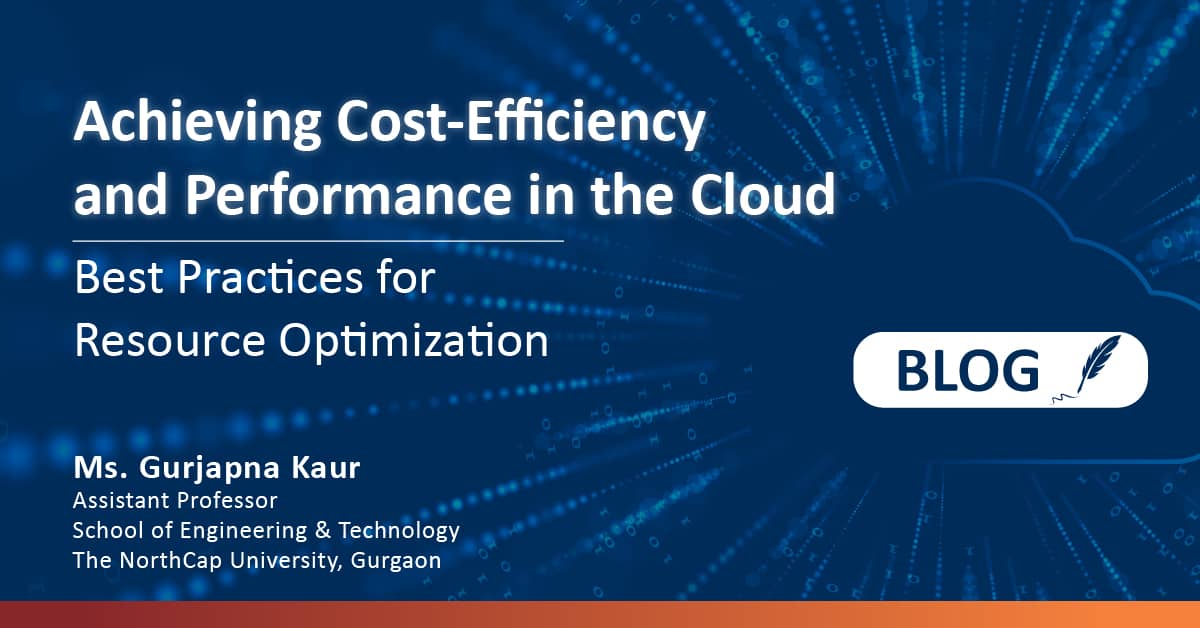Achieving Cost-Efficiency and Performance in the Cloud: Best Practices for Resource Optimisation

In today’s cloud-centric world, businesses are leveraging cloud computing to scale their operations, improve agility, and reduce infrastructure costs. However, to truly harness the power of the cloud, organisations must prioritise resource optimisation. By maximising cost-efficiency and performance, businesses can optimize their cloud spend while delivering top-notch services to users. This blog outlines best practices for achieving resource optimisation in the cloud, focusing on key strategies to strike the right balance between cost and performance.
1. Understand Resource Optimisation in the Cloud:
Resource optimisation in the cloud involves the efficient utilization of computing, storage, and networking resources to meet business demands. By making the most of available resources, organisations can reduce operational costs and ensure optimal performance for their applications.
2. Analyse Resource Utilization:
To optimise resources effectively, businesses must first analyse their resource utilisation. Monitoring tools and services allow organisations to gain insights into their cloud infrastructure, identify underutilised resources, and plan for better allocation.
3. Rightsize Instances and Services:
Rightsizing is a crucial aspect of resource optimisation. By selecting the right instance types and services based on workload characteristics, organisations can avoid over-provisioning and optimise resource allocation. This practice directly impacts both cost and performance.
4. Leverage Auto Scaling and Load Balancing:
Auto scaling and load balancing play a significant role in resource optimisation. Auto scaling enables dynamic adjustment of resources based on demand, while load balancing ensures even distribution of workloads across instances, leading to improved performance and cost savings.
5. Embrace Serverless Computing and Containerisation:
Serverless computing and containerisation are transformative technologies in resource optimization. Serverless computing abstracts infrastructure management, enabling organisations to focus on writing code without worrying about resource provisioning. Containers enable efficient use of resources by encapsulating applications and their dependencies, making them portable and scalable.
6. Optimise Cloud Costs:
Reducing cloud costs is a critical objective of resource optimisation. This section covers cloud cost optimisation strategies, including spot instances, reserved instances, and using the most cost-effective storage options.
7. Implement Resource Tagging and Governance:
Resource tagging and governance are essential to effectively manage cloud resources. By implementing proper tagging and governance policies, organisations can gain visibility into resource usage, enforce compliance, and control costs.
8. Harness AI and ML for Resource Prediction:
AI and ML technologies are powerful tools for resource optimisation. It explores how AI and ML can be leveraged to predict resource demand, optimise auto-scaling parameters, and predict future cost trends. Resource optimization is a continuous journey in the cloud. By following the best practices outlined in this blog, businesses can strike the perfect balance between cost and performance, achieve cost-efficiency, and deliver exceptional services to their customers. A well-optimised cloud infrastructure empowers organisations to scale and innovate with confidence. In this blog, we covered the essentials of resource optimisation in the cloud, including analyzing resource utilization, rightsizing instances and services, leveraging auto-scaling and load balancing, embracing serverless computing and containerization, optimizing cloud costs, implementing resource tagging and governance, and harnessing AI and ML for resource prediction. By putting these best practices into action, businesses can unlock the full potential of the cloud while keeping costs in check and delivering top-tier performance to users.
Author

MS Gurjapna Kaur
Assistant Professor, Department of SOM & LS
The NorthCap University, Gurugra
